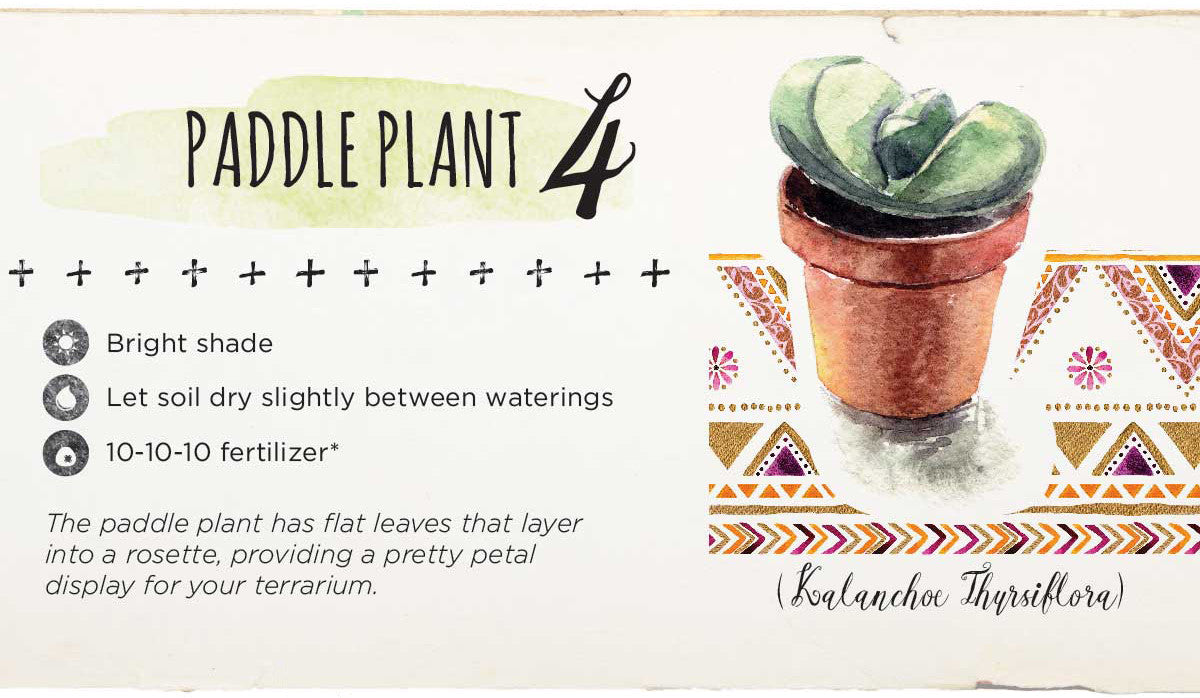We've compiled nine of the best succulents to plant in your terrarium.
Here are our top picks:









 Pincushion Cactus
Pincushion Cactus
This cactus has small flowers that give your terrarium a delicate appeal. These require a high amount of light and dry soil between waterings.
Medicine Plant
This plant adds a sharp, spiky texture to your terrarium. Healing sap of the aloe plant has been used to treat wounds and sunburn.
Hens & Chicks
This is one of the most popular succulents used in terrariums. This includes plump petals that add the finishing touch to your terrarium.
Paddle Plant
This plant has flat leaves that layer into a rosette which provides a pretty petal display.
Zebra Haworthia
This plant will add a spikey, leathery look to your terrarium. The striped pattern adds color and interest to the ensemble.
Burro's Tail
The ropey leaves can be pale green to a blue green for a unique look.
String of Pearls
The long, trailing stems add height and drama to hanging terrariums.
Tiger Jaws
These sharp leaves are like a tiger's jaw. Low growing, star-shaped rosettes will sprout a beautiful yellow flower.
Agave
The agave plant has endless varieties to choose from to add texture and volume to your terrarium
Sources:
Derek Woodruff, AIFD, PFCI, CF, Owner of Floral Underground
http://balconygardenweb.com/14-best-indoor-succulents-to-grow-at-home/
http://www.drought-smart-plants.com/10-best-succulents-for-beginners.html
https://www.gardenista.com/posts/10-easy-pieces-best-succulents/
https://www.simplemost.com/best-plants-to-grow-in-your-terrarium/












 Pincushion Cactus
Pincushion Cactus
1 comment
I would like to know will a $ plant live in a succulent terrarium? And is live moss better than the dried up stuff you find at $ stores ?